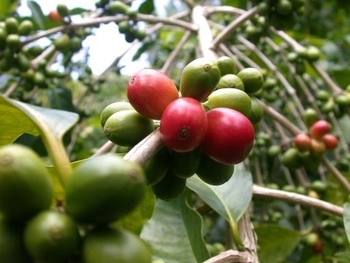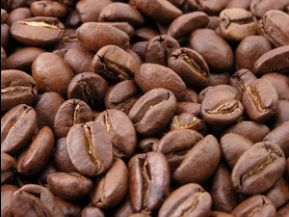About Fresco
Fresco's Coffee is a family business, run by a family that really loves flavoured coffee!
We set the company up in 2006 having spent many years working in retail for other people, and feeling like we could do a much better job of it ourselves. So we took the plunge and today we're proud to offer one of the widest ranges of gourmet flavoured coffee available anywhere, all made from the highest quality coffee beans and all natural oils and flavourings.
As big coffee drinkers ourselves we know that freshness is everything so we offer all our coffees in airtight foil lined bags; whole beans hold flavour the best but even our ground coffee beans are freshly ground and packed immediately before dispatch to keep in as much flavour as possible.
You'll find our customer service is just what you'd expect from a family business; personal, reliable, reasonable and easy to get hold of on the phone. We sell our gourmet coffee (and delicious chocolate covered beans!) at markets and fairs as well as our online shop and provide a unique refreshments option for all kinds of events around the UK. So, we enjoy meeting our customers, answering questions and introducing them to our flavoured coffees.
So whatever you want from a simple bean, we're here to provide it; online ordering with a range of ways to pay, free UK delivery, face to face service at markets and fairs or a portable coffee shop with a flavoured gourmet twist for your special event. We also enjoy providing our products as bulk wholesale to commercial businesses like coffee shops, cafes and restaurants, bringing a unique touch to the after dinner coffee!
Thanks for visiting, we hope you enjoy browsing our shop and sample a few of our products!

COFFEE PROCESSING
Irrespective of the harvesting method, green coffee beans and overripe coffee cherries inevitably end up mixed with the perfectly ripe cherries and must be separated during coffee processing. Overripe coffee cherries, undeveloped coffee cherries, sticks and leaves float in water. Ripe coffee beans and green coffee cherries are dense and sink. Therefore, the first step in coffee production consists of separating the "floaters" from the "sinkers." The coffee floaters are usually sent directly to the patio to be dried and are often slated for internal consumption. The ripe and green cherries can be sent to the patios to be dried using the natural process of preparing coffee or can be sent to the coffee pulping machines.
Coffee Processing Equipment
The first stage of coffee pulping is used to remove the green coffee cherries from the ripe cherries. In the coffee pulping machinery, the internal pressure is monitored to push the coffee against a screen with holes only large enough for a coffee bean (not cherry) to pass through. Since the ripe cherries are soft, they break and the coffee seed is released through the screen.
Pulping Coffee
The green cherries are hard and cannot be pulped. Instead of passing through the screen, the green coffee beans pass to the end of the barrel system and are separated from the ripe coffee beans. The pressure inside the barrel controls how many cherries will be pulped. A very high pressure will cause all of the cherries including the green beans to be pulped. It is necessary to continuously monitor the pressure so that about 3% of ripe cherries are not pulped and are removed with the green cherries. This margin of error ensures that no green cherries are mistakenly pulped. The pulp and coffee beans are then separated by centrifugal force and a barrel screen system.
Coffee Fermentation
The coffee beans covered in the slippery mucilage can be sent to the patios to dry as pulped natural coffees or can be sent to coffee fermentation tanks. The coffee fermentation tanks are used to remove the mucilage before drying. The pulped coffee beans are put into cement tanks with water and are allowed to ferment for 16-36 hours. On the way to the fermentation tanks, another density separation can occur. The highest quality coffees are the densest and should be separated and fermented in a different tank.
The coffee fermentation time depends on a number of factors including the amount of coffee fermenting, water temperature, and humidity. The mucilage is made up of pectin materials including protopectin (33%), reducing sugars including glucose and fructose (30%), non-reducing sugars such as sucrose (20%), and cellulose and ash (17%) (Wrigley, 455). Protopectin is not water soluble and will hydrolyze to pectinic acid in the fermentation tanks (Wrigley, 455). Hydrolysis of the protopectin and degradation of the pectin by enzymes is the process that occurs to remove the mucilage during fermentation (Wrigley, 455). Currently, the best way of determining the end of coffee fermentation is to feel the coffee beans to determine if they are still encased in mucilage. If the coffee beans are fermented for 36-72 hours, stinker beans develop. Lactic, acetic, and propionic acids are produced in this process and are believed to prevent the traditional fermentation taste by inhibiting mold growth that regularly occurs during drying on a patio in humid conditions (Wrigley).
Coffee Drying
From the coffee fermentation tanks, the beans are moved to drying patios and dried to 11-12% moisture content. See coffee drying section for more details. A small portion of the lot is hulled and milled by a mini-huller. Three hundred grams of coffee is classified for defects (100 grams is often used), and the percentage of each screen size is determined. Then, 200-300 grams of coffee is roasted in a sample roaster and cupped to determine coffee quality. Ideally no lots will be mixed until the coffee has been classified and cupped. The coffee remains in pergamino until shipment time to help protect the flavor and aroma of the coffee.
ROASTS
Fresco Gourmet Coffee company provides the latest and best roasting facilities, providing us with the best roasts and variety of flavors. We also do our own roasting for special blend coffee.
Cinnamon
The bean is light brown, and dry (no oil visible). The flavour is baked or "bready", like toasted grain. There will likely be definite sour tones. There is not much body in cinnamon roasted coffee.

New England
A term not as frequently used as the others, though this roast is apparently common in the eastern United States. It's a little darker than the cinnamon roast, but without the grainy flavor. New England roast will still have some sour tones to it.
American, Light
Medium light brown beans. This roast is the norm for eastern USA. This roast (and sometimes cinnamon as well) is the most often used for cupping or professional tasting.
City, Medium
The color is darker still, more of a medium brown (think chocolate). This roast is common in the western parts of the USA. This roast is a good choice to taste the differences between varietals.
Full City
Medium dark brown beans. The beans will start to show some oily drops on the surface with this roast. Full City will have caramel or chocolate undertones.
French, Espresso
Beans are starting to get dark brown, and French roasted beans are shiny with oil. There is less acidity, but with burned undertones. This roast is often used when making Espresso. Many people think this is the darkest roast available, but that's not true.
Italian, Dark French
Similar to regular French, but more so. Darker and oilier looking, and with a stronger burned flavor.
Spanish
Darkest roast of all. Color is nearly black, and the flavor is flat with a charcoal undertone.
CIVET COFFEE
Some governments also considers the Liberica coffee plant, which is grown to feed the Civets, to be an endangered species. By working with private foundations, the governments works to preserve both the coffee species as well as the Civet.
After the Civets eat the coffee fruit off the coffee trees they digest most of the outer fruit and then defecate the beans which are gathered up and washesd, sun-dried, and lightly roasted resulting in the famous Civet coffee.
Civet Coffee
Characteristics of Civet Coffee
Civet coffee known for its high aroma, smooth taste, and low acidity – often quite sweet and very full in the cup – civet coffee is made with coffee beans that are retrieved from the excretion of an animal called the civet.
Civet Coffee Producing Regions
Civet coffee is produced in various countries including the Philippines, Sumatra, Java, Bali, Sulawesi, and East Timor. In Indonesia civet coffee is known as Kopi Luwak and in the Philippines it is called Kape Alamid.
How Civet Coffee is Produced
The coffee beans pass through the civet’s digestive tract where the outer fruit is mostly digested, and then the beans are then defecated onto the ground. Coffee farmers then collect the coffee beans and usually wash and sun-dry them.
Natural Lack of Bitterness Requires Only Light Roasting

